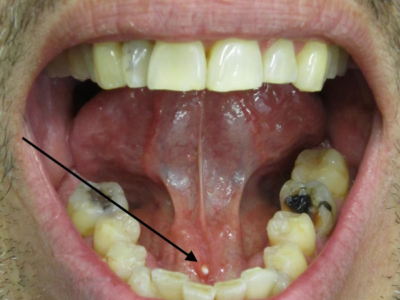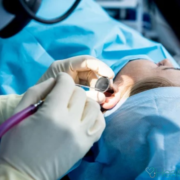Ear Tube Surgery is a common and effective procedure designed to alleviate the discomfort and complications associated with chronic ear infections and fluid accumulation in the middle ear. This ear tube procedure involves the insertion of small tubes into the eardrum, allowing for improved ventilation and drainage, thus preventing the buildup of fluid that can lead to serious issues like hearing loss or speech delays, particularly in children. The benefits of ear tubes are significant, as they can drastically reduce the frequency and severity of ear infections, giving children a better quality of life. Understanding when ear drum surgery is necessary is crucial for parents, especially when traditional treatments are ineffective. With the rise in ear infections among children, learning about the ear tube benefits can help caregivers make informed decisions about their child’s health.
Ear Tube Surgery, often referred to as ventilation tube insertion, is a vital intervention for individuals suffering from persistent middle ear issues. This procedure is particularly relevant for children who frequently deal with ear infections, as it helps maintain a healthy balance of air pressure in the ear, promoting better drainage and reducing pain. By addressing the underlying problems of Eustachian tube dysfunction, ear tubes can significantly enhance hearing and overall ear health. For parents seeking solutions for their child’s ear-related challenges, understanding the nuances of this surgical option can provide clarity and peace of mind. The procedure not only alleviates immediate discomfort but also supports long-term developmental milestones, making it a crucial consideration for young patients.
Definition and Purpose of Ear Tubes
Ear tubes, also referred to as ventilation tubes, are small cylindrical devices made from either metal or plastic, surgically inserted into the eardrum. Their primary function is to facilitate airflow to the middle ear, preventing the buildup of negative pressure that can lead to fluid accumulation. When these tubes are in place, they allow for the drainage of any fluid that may have collected behind the eardrum, thus maintaining a healthy ear environment and reducing the risk of infections.
The importance of ear tubes cannot be overstated, particularly in young children who are more susceptible to ear infections due to their anatomical differences. Children often experience more frequent ear infections because their Eustachian tubes are shorter and more horizontal than those of adults. By inserting ear tubes, healthcare providers can ensure that the middle ear remains ventilated and free from fluid, which is critical for preserving hearing and preventing potential speech delays that can arise from prolonged ear issues.
The Necessity of Ear Tube Surgery: When is it Required?
Ear tube surgery is not a one-size-fits-all solution; it is typically reserved for children who exhibit specific symptoms of chronic ear problems. For instance, if a child has had persistent fluid in the middle ear for three to four months or experiences hearing loss that impacts speech development, surgery may be warranted. Additionally, children who suffer from recurrent middle ear infections that do not respond to antibiotics may also benefit from ear tube surgery, as it can effectively reduce the frequency and severity of these infections.
It’s essential to recognize that many children may experience occasional ear infections that can be managed with medications. However, for those who face ongoing issues, ear tube surgery provides a proactive approach to prevent further complications. By addressing the underlying causes of fluid retention and recurrent infections, the procedure enhances the child’s overall health and quality of life.
The Procedure: How Ear Tube Surgery is Performed
Ear tube surgery is a relatively straightforward procedure that typically takes between 10 to 15 minutes and is performed under general anesthesia. The surgeon begins by making a small incision in the eardrum to access the middle ear. This allows for the removal of any fluid that has accumulated, and subsequently, a small ear tube is inserted into the incision. This tube serves as a new drainage pathway, ensuring that air can flow freely into the middle ear and preventing future fluid buildup.
One of the advantages of ear tube surgery is its minimally invasive nature. Since the procedure is performed through the ear canal, there are no visible cuts or stitches on the outer ear. After the surgery, children can typically go home the same day, and the recovery period is generally short. Parents can expect their child to experience some mild discomfort, but overall, the procedure is considered safe and effective in managing ear-related issues.
Recovery After Ear Tube Surgery: What to Expect
The recovery process following ear tube surgery is usually smooth and quick. Most children are able to return to their normal activities within a few days, although they may experience mild symptoms such as nausea or earache immediately following the procedure. It’s common for children to notice a popping sensation in their ears during yawning or swallowing, but this sensation typically subsides as the eardrum heals.
After the surgery, there are minimal restrictions, although parents are advised to keep their children from submerging their ears in water, such as during swimming or bathing, to prevent any fluid from entering through the tubes. Earplugs are recommended during these activities. Ear tubes generally remain in place for about six to eighteen months before they fall out on their own, and most children see significant improvement in their ear health during this time.
Risks and Considerations of Ear Tube Surgery
While ear tube surgery is a common procedure with a high success rate, it is important to be aware of potential risks. The primary risks associated with the surgery include infection at the incision site and reactions to anesthesia, which are common across many surgical procedures. However, serious complications are rare, and most children experience a significant improvement in their ear health following the surgery.
Parents should also be informed about the possibility of fluid entering the ear through the tubes, although this is uncommon and manageable. In the event that fluid does enter, it is usually not a cause for alarm, but it may require additional monitoring. Overall, ear tube surgery is considered a safe and effective treatment for managing chronic ear issues in children, providing long-term benefits that often outweigh the minimal risks involved.
Frequently Asked Questions
What is an Ear Tube and how does it function in Ear Tube Surgery?
An ear tube, also referred to as a ventilation tube, is a small cylindrical device made of metal or plastic that is inserted into the eardrum during ear tube surgery. Its primary function is to allow airflow to the middle ear, preventing fluid accumulation and helping to drain any existing fluid behind the eardrum.
Why is Ear Tube Surgery performed in children with ear infections?
Ear tube surgery is performed in children to prevent fluid buildup in the middle ear, which is often caused by dysfunction of the Eustachian tube. This condition can result in frequent ear infections, pain, and potential hearing loss. By placing ear tubes, the surgery facilitates proper drainage and reduces the frequency of infections.
When is Ear Tube Surgery deemed necessary for children?
Ear tube surgery is typically necessary for children experiencing persistent fluid in the middle ear for three to four months, those suffering from hearing loss or speech delay due to fluid, or children with chronic middle ear infections that do not respond to antibiotics. This procedure significantly helps in managing these conditions.
How is the Ear Tube Surgery procedure performed?
Ear tube surgery is performed under general anesthesia and usually lasts 10 to 15 minutes. The surgeon makes a small incision in the eardrum to suction out fluid and places a tiny tube into the eardrum. The procedure is minimally invasive, with no visible cuts or stitches.
What should one expect during the recovery process after Ear Tube Surgery?
Recovery from ear tube surgery is generally swift, with most children spending only a few hours at the hospital. Mild discomfort or nausea may occur, and children might feel a popping sensation in their ears. Ear tubes usually fall out naturally within 6 to 18 months, and precautions such as wearing earplugs while swimming are advised.
What are the potential risks associated with Ear Tube Surgery?
Ear tube surgery is considered a safe and common procedure with minimal risks. Potential risks include infection and reactions to anesthesia, which are typical of any surgical intervention. Overall, the benefits of the surgery in reducing ear infections and improving hearing outweigh these risks.
| Key Points | Details |
|---|---|
| What is an Ear Tube? | A small cylinder inserted into the eardrum to allow airflow and drainage in the middle ear. |
| Why is Ear Tube Surgery Performed? | To prevent fluid accumulation and relieve ear pain caused by Eustachian tube dysfunction, especially in children prone to ear infections. |
| When is Surgery Necessary? | Recommended for children with persistent fluid for 3-4 months, hearing loss, speech delay, or recurrent infections that don’t improve with antibiotics. |
| How is Ear Tube Surgery Performed? | Performed under general anesthesia, the procedure lasts 10-15 minutes and involves a small incision in the eardrum to insert the tube. |
| Recovery Process After Ear Tube Surgery | Children usually recover in a few hours, experience mild discomfort, and can travel by plane without issues. |
| What are the Risks of Ear Tube Surgery? | Minimal risks include infection and anesthesia complications. Overall, it is a common and safe procedure. |
Summary
Ear Tube Surgery is a commonly performed procedure aimed at alleviating problems associated with fluid buildup in the middle ear. By inserting ear tubes, doctors can effectively manage ear infections and prevent associated complications such as hearing loss and speech delays in children. This surgical intervention is typically safe, with a straightforward recovery process, allowing children to return to normal activities quickly. Understanding the reasons for the surgery and the recovery process can help parents make informed decisions regarding their child’s ear health.







Comments